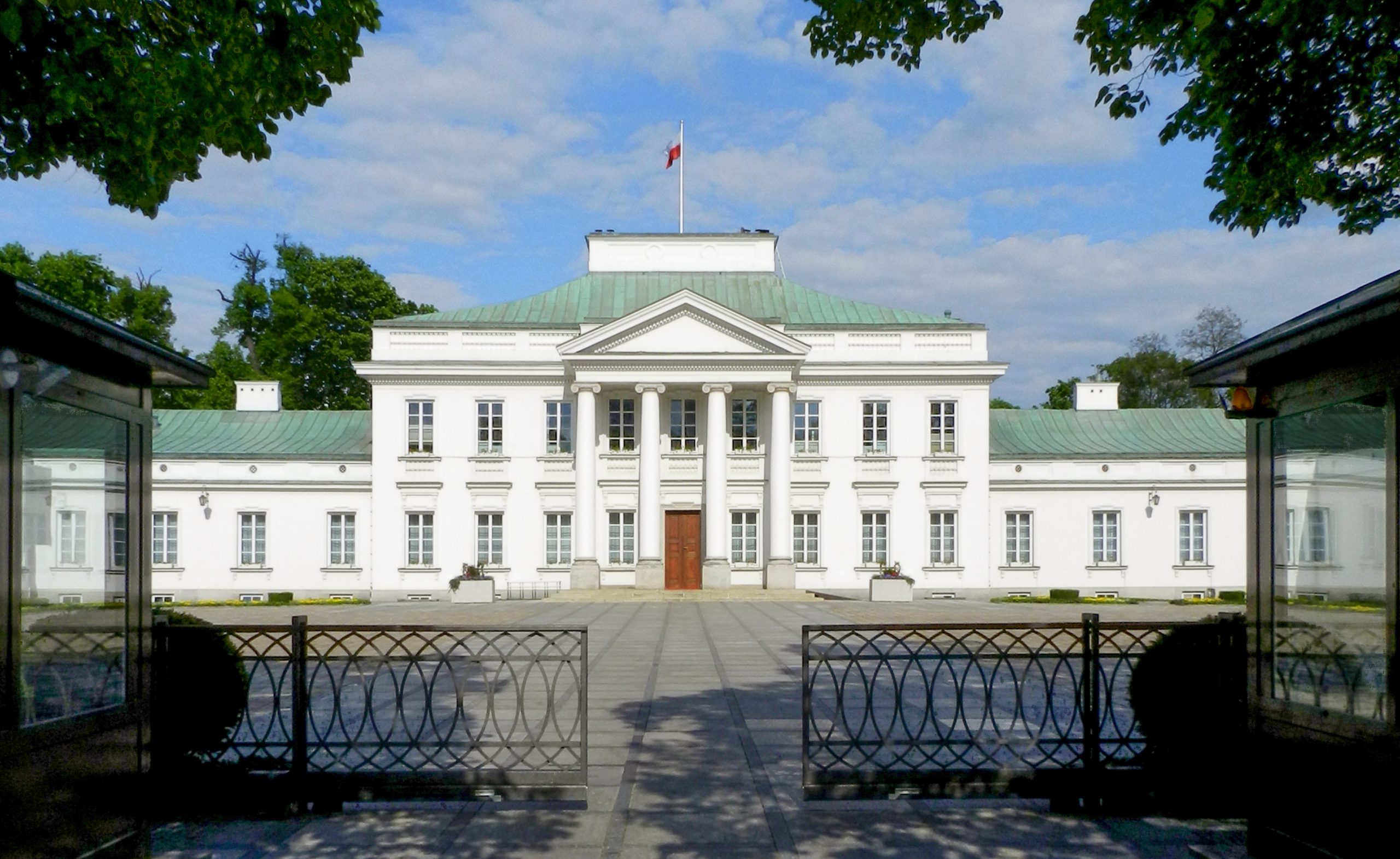Photos of the Finest Polish Castles, Palaces, and Manor Houses (58 Stunning Images)
Poland boasts an impressive array of magnificent castles, manor houses, and estates. To my surprise, the research for this article uncovered a treasure trove of these architectural marvels. Presented below are numerous Polish castles, each unique in its own shape and size.
Included are historic palaces, estates, and manor houses, showcasing an awe-inspiring diversity of styles. Prepare to be captivated!
1. Belweder Palace

Belweder Palace, also known as the Belweder, was constructed in 1660 and originally belonged to Stanisław August Poniatowski, Poland’s final king. Over the years, it served as the residence for various noble owners and important figures. Devastated during the Second World War, it underwent renovations supervised by Hans Frank, the Governor of the “General Government” of Poland. Eventually, it became the official residence of Polish presidents.
Fascinating Facts About Belweder
Location: Warsaw, Poland
Year Built: 1660
Architect: Unknown
Architectural Style: Neoclassical/Palladian
Current Function: Official residence of Polish presidents
Current Owner: Republic of Poland
2. Castle of Warmian Bishops
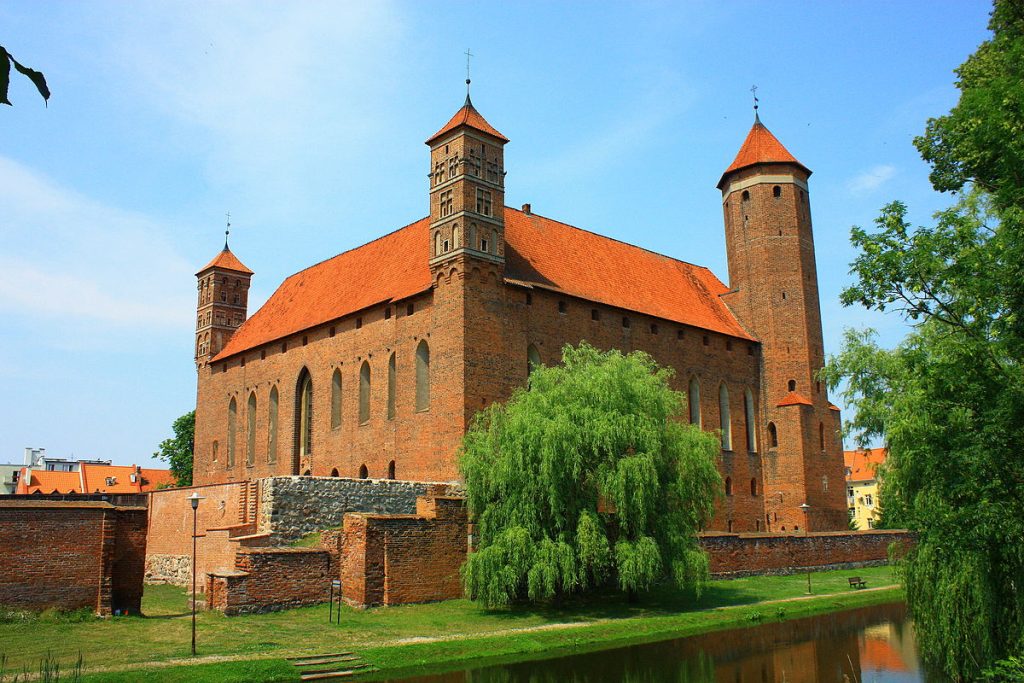
The Castle of Warmian Bishops, nestled in the town of Lidzbark Warmiński, is a prized example of Gothic architecture and a popular attraction for tourists. Initially erected between 1350 and 1401 to serve the Warmian bishops, it later came under the ownership of the Teutonic Order.
Explore German Castles too!
Fascinating Facts About the Castle of Warmian Bishops
Location: Warmian-Masurian Voivodeship, Poland
Years Built: 1350-1401
Architect: Warmian Bishops
Architectural Style: Gothic
Current Function: Tourist attraction
Current Owner: Republic of Poland
3. Branicki Palace
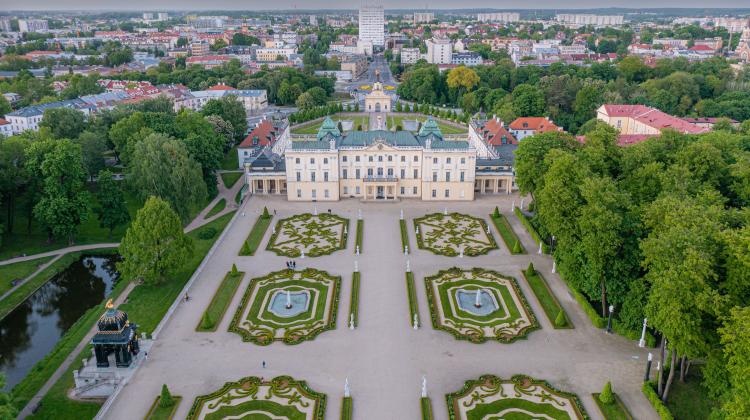
The Branicki Palace, constructed from 1691 to 1697, graces the city of Białystok in the Podlaskie Voivodeship. This historical masterpiece was built for Count Jan Klemens Branicki, a prominent Polish noble known for his patronage of the arts and sciences. Replacing the previous Gothic-Renaissance structure on the same site, the palace was later inherited by Stefan Mikołaj Branicki. Under his ownership, the estate underwent a reconstruction, resulting in the splendid Baroque palace that currently houses the Medical University and Medical Museum.
Fascinating Facts About the Branicki Palace
Location: Podlaskie Voivodeship, Poland
Years Built: 1691-1697
Architect: Stefan Mikołaj Branicki
Architectural Style: Baroque
Current Function: Medical University and Medical Museum
Current Owner: Republic of Poland
4. Kórnik Castle

Originally built in the late 14th century, Kórnik Castle was commissioned by the Górka family. Throughout its history, the castle underwent various modifications under different noble families. Notably, in 1855, architect Karl Friedrich Schinkel transformed it into a Neo-Gothic marvel at the request of Tytus Działyński, for his son Jan Kanty Działyński.
Following the passing of Jan Kanty Działyński, the castle came under the ownership of his brother-in-law, Count Władysław Zamoyski. Afterward, the Polish state took charge of its preservation.
Discover English Castles as well!
Fascinating Facts About Kórnik Castle
Location: Kórnik, Poland
Year Built: 14th century
Architect: Górka family (Original); Karl Friedrich Schinkel (Redesign)
Architectural Style: Neo-Gothic
Current Function: Kórnik Library, Museum, National Historic Monuments
Current Owner: Republic of Poland
5. Jelcz-Laskowice Castle

Originally constructed in the 13th century by the Archbishop of Salzburg, Władysław, the Jelcz-Laskowice Castle exhibits Gothic architectural influences. Over the years, it underwent multiple reconstructions, with the most remarkable transformation occurring during the 16th century, when it was converted into a picturesque Renaissance castle by Konrad von Sauss.
Don’t miss out on Indian Palaces either!
Fascinating Facts About Jelcz-Laskowice Castle
Location: Jelcz-Laskowice, Poland
Year Built: 13th century
Architect: Archbishop of Salzburg, Władysław
Architectural Style: Renaissance
Current Function: City Council
Current Owner: Town of Jelcz-Laskowice
6. Kórnik Castle
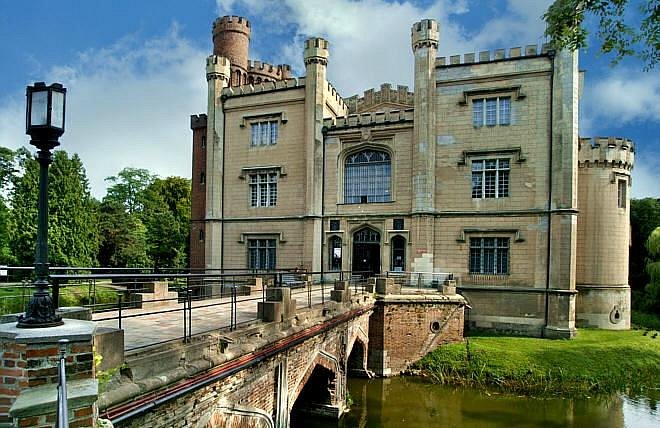
Built in the late 14th century, Kórnik Castle was commissioned by the Górka family. Over time, subsequent noble families introduced various modifications and alterations. Notably, in 1855, the castle underwent a significant redesign by architect Karl Friedrich Schinkel in a Neo-Gothic style, fulfilling the wishes of Tytus Działyński for his son, Jan Kanty Działyński.
Following the passing of Jan Kanty Działyński, the castle came under the ownership of his brother-in-law, Count Władysław Zamoyski. Afterward, the Polish state took charge of its preservation. Take a look at these marvelous English Castles too!
Fascinating Facts About Kórnik Castle
Location: Kórnik, Poland
Year Built: 14th century
Architect: Górka family (Original); Karl Friedrich Schinkel (Redesign)
Architectural Style: Neo-Gothic
Current Function: Kórnik Library, Museum, National Historic Monuments
Current Owner: Republic of Poland
7. Przemyśl Castle

Also known as Casimir Castle, the Przemyśl Castle is a Renaissance marvel located in Przemyśl, Poland. Its construction in 1580 replaced the former Gothic castle of Casimir III the Great. Commissioned by Marcin Krasicki, the town elder, and supervised by Italian architect Galleazzo Appiani, the castle underwent a remarkable transformation. During the 19th century, it passed into the hands of the City of Przemyśl and was converted into a highly regarded hotel and restaurant.
Explore these captivating Irish Castles as well!
Fascinating Facts About Przemyśl Castle
Location: Przemyśl, Poland
Year Built: 1580
Architect: Casimir III the Great (Original); Marcin Krasicki (Reconstruction)
Architectural Style: Gothic/Renaissance
Current Function: Hotel and Restaurant
Current Owner: City of Przemyśl
8. Pszczyna Castle

Pszczyna Castle, originally constructed in the 12th century, stands as a testament to classical-style architecture in the city of Pszczyna. Initially designed in the Gothic style, the castle was later transformed into a Renaissance stronghold during the 17th century. Subsequently, it adopted a Baroque-Classical style during the 18th and 19th centuries. Over its storied history, the castle served as the residence of Silesian and Polish Piast nobles. Following the
death of the last Prince of Pless, Hans Heinrich XV, in 1936, the castle came under the ownership of the German state. However, after the Second World War and border changes, the castle passed into the hands of Poland and was converted into a museum.
You might also be interested in Austrian Castles!
Fascinating Facts About Pszczyna Castle
Location: Pszczyna, Poland
Year Built: 12th century
Architect: Unknown
Architectural Style: Gothic/Renaissance/Baroque-Revival
Current Function: Museum
Current Owner: City of Pszczyna
9. Bobolice Castle

Commissioned by King Casimir III the Great in the mid-14th century, Bobolice Castle played a crucial role in the defense system along the western border of the Kingdom of Poland. Initially bestowed upon Władysław Opolczyk, Duke of Opole, as a reward for his support, the castle witnessed the presence of numerous royal figures until its destruction during the Deluge in 1657.
Later, the Lasecki family acquired the castle with the intention to rebuild it, but their efforts were unsuccessful. In 2011, a private investor undertook the task of reconstructing the castle, transforming it into a popular tourist destination.
Don’t miss out on Belgian Castles either!
Fascinating Facts About Bobolice Castle
Location: Bobolice, Poland
Year Built: 14th century
Architect: King Casimir III the Great
Architectural Style: Polish Gothic
Current Function: Tourist attraction
Current Owner: Town of Bobolice
10. Krobielowice Palace

Originally a fortified manor house dating back to the 14th century, Krobielowice Palace underwent significant transformations. In 1529, it was acquired by the Minor Order of Friars, who made renovations to the building. While the three wings were designed in the Renaissance style, the three towers adopted Baroque architecture.
In the 19th century, Prussian Field Marshal Gebhart Leberecht von Blücher received the property from King Frederick William III of Prussia in recognition of his services to the nation. After von Blücher’s death in 1819, the palace remained in the possession of the Blücher family until 1945. Currently, the palace has been renovated and transformed into a hotel, restaurant, and golf course by its present owner.
You may also be fascinated by Russian Palaces!
Fascinating Facts About Krobielowice Palace
Location: Krobielowice, Poland
Year Built: 14th century
Architect: Unknown
Architectural Style: Renaissance/Baroque
Current Function: Hotel, Restaurant, Golf Course
Current Owner: Private owner
11. Lesnica Castle

Originally constructed in the 12th century as a Gothic castle, Lesnica Castle served as the residence for royal families in Wrocław, Poland. Over time, the castle changed hands and was transformed into a magnificent Baroque structure by the Wroclaw’s Order of the Red Star Crusaders in the 18th century, after it was sold to them by the von Forno family. Today, the castle houses the “Zamek” Cultural Center and is open to the public.
Don’t forget to explore Czech Republic Castles too!
Fascinating Facts About Lesnica Castle
Location: Wrocław, Poland
Year Built: 12th century
Architect: Unknown/Order of the Red Star Crusaders
Architectural Style: Gothic/Baroque
Current Function: Zamek Cultural Center
Current Owner: City of Wrocław
12. Gołuchów Castle

Dating back to the 16th century, Gołuchów Castle was originally a fortified manor house and residence for the Voivode of the Brześć Kujawski Voivodeship, Rafał Leszczyński. Over the years, successive owners expanded and transformed the estate into a magnificent Renaissance stronghold. It later came under the ownership of Tytus Działyński, who commissioned a remodeling of the castle in the French Renaissance style for his son, Jan Kantega, and his wife, Izabela of the House of Czartoryski.
After World War II, the castle housed a branch of the National Museum in Poznań.
Fascinating Facts About Gołuchów Castle
Location: Gołuchów, Poland
Years Built: 1550-1560
Architect: Voivode of the Brześć Kujawski Voivodeship, Rafał Leszczyński
Architectural Style: Renaissance/French Renaissance
Current Function: Branch of the National Museum in Poznań
Current Owner: Republic of Poland
13. Castle Milicz

Castle Milicz, situated in Dolnoslaskie, Silesia, Poland, is a historic castle that has been transformed into a municipal school for forestry.
14. Pieskowa Skała Castle

Pieskowa Skała Castle, built by King Casimir III the Great, is renowned as a prime example of defensive Polish Renaissance architecture. Replacing the 14th-century defensive stronghold, the castle was expanded during the 16th century. Today, the castle serves as a branch of the Wawel Royal Castle museum, under the care of the Republic of Poland.
Fascinating Facts About Pieskowa Skała Castle
Location: Pieskowa Skała, Poland
Year Built: 16th century
Architect: King Casimir III the Great
Architectural Style: Renaissance
Current Function: Branch of the Wawel Royal Castle Museum
Current Owner: Republic of Poland
15. Wojnowice Castle

Wojnowice Castle originated as a small property on a farm in the 13th century. Later, during the 14th century, it was purchased and transformed into a castle. Throughout the centuries, it changed hands and saw its Renaissance form take shape in the 16th century. Currently, the castle is owned by the College of Eastern Europe in Wrocław and serves as a hotel, restaurant, and foundation office.
Fascinating Facts About Wojnowice Castle
Location: Wojnowice, Poland
Year Built: 14th century
Architect: Unknown
Architectural Style: Renaissance
Current Function: Hotel, Restaurant, Foundation Office
Current Owner: College of Eastern Europe in Wrocław
16. Czocha Castle
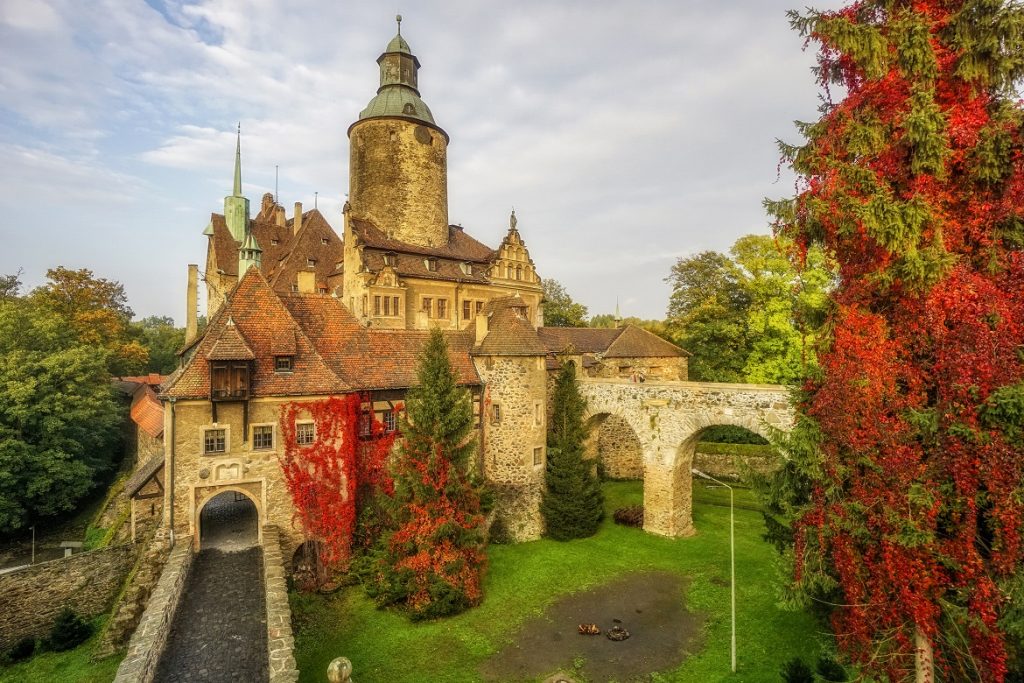
Located in the village of Czocha, Czocha Castle was initially a defensive stronghold commissioned by Wenceslaus I of Bohemia in the 13th century. Over time, it passed through the hands of various royalty and noble families. After the Second World War, the Polish Army utilized the castle as a military vacation resort, removing it from Poland’s official maps. However, in 1996, it was opened to the public as a hotel.
Fascinating Facts About Czocha Castle
Location: Czocha, Poland
Year Built: 13th century
Architect: Wenceslaus I of Bohemia
Architectural Style: Renaissance
Current Function: Hotel
Current Owner: Hotel Group WAM
17. Czorsztyn Castle
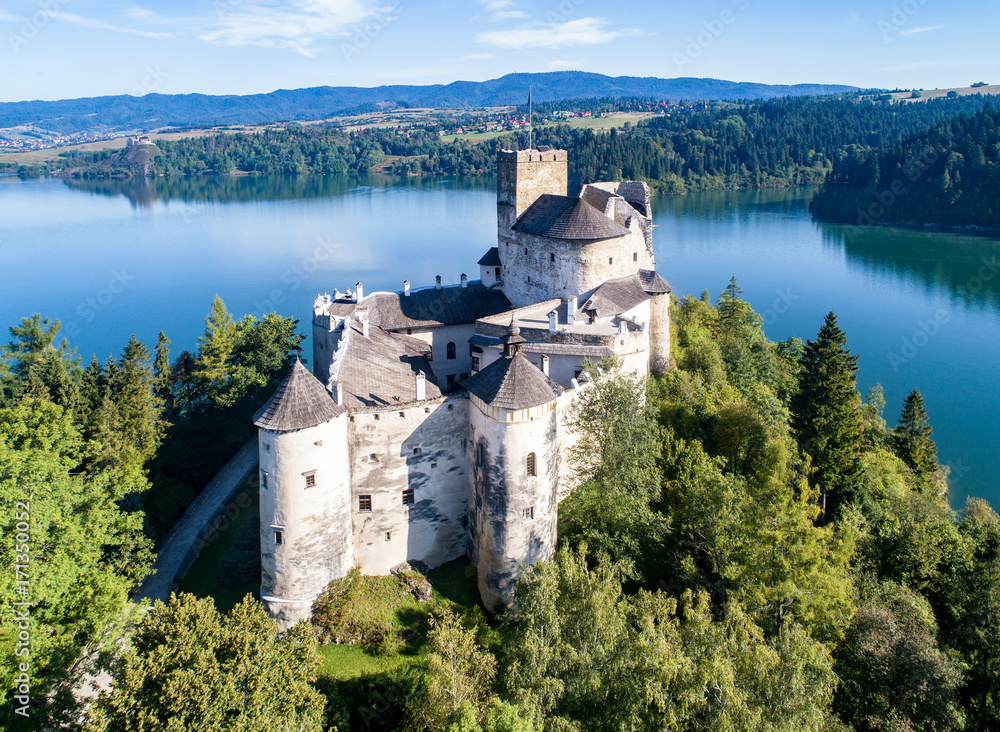
The ruins of Czorsztyn Castle, situated in Czorsztyn, Poland, once served
as the ancestral home of noblemen and housed the customs office on the trade trail from Krakow and Sącz to Hungary. Originally constructed as a stronghold in the mid-13th century, the castle suffered destruction due to a lightning strike in 1720, leading to its subsequent neglect. Today, the castle ruins are open to the public.
Fascinating Facts About the Ruins of Czorsztyn Castle
Location: Czorsztyn, Poland
Year Built: 13th century
Architect: Unknown
Architectural Style: Gothic
Current Function: Ruins
Current Owner: Republic of Poland
18. Drzeczkowo Palace
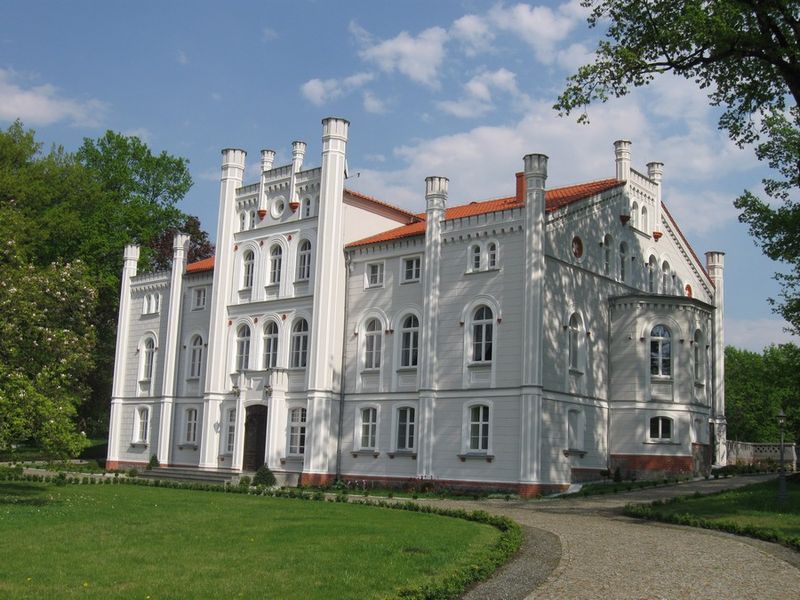
Constructed in 1865, Drzeczkowo Palace features a blend of Gothic Romantic style with Neo-Gothic and Neo-Renaissance elements. Initially owned by the Baron von Leesen family, the palace came under the management of the State Farm at the end of 1945.
Fascinating Facts About Drzeczkowo Palace
Location: Drzeczkowo, Poland
Year Built: 1865
Architect: Unknown
Architectural Style: Neo-Gothic/Neo-Renaissance
Current Function: Hotel
Current Owner: Unclear
19. Epstein’s Palace

Epstein’s Palace in Teresin was constructed at the request of the Epstein family between 1890 and 1900. Designed by French architect Francois Arveuf in the Neo-Rococo style, it replaced the original castle created by renowned Warsaw architect Adam Loewe. In 1909, the palace was purchased by Prince Władysław Drucki-Lubecki and later sold to local landowners during World War II.
Following the war, the palace served as an Agricultural Training Center before becoming a school for a brief period. It then resumed its role as a training base for agricultural cooperatives managed by the Center for Training and Rehabilitation KRUS.
Fascinating Facts About Epstein’s Palace
Location: Teresin, Poland
Years Built: 1890-1900
Architect: Francois Arveuf
Architectural Style: Neo-Rococo
Current Function: Training and Rehabilitation Center KRUS
Current Owner: Center for Training and Rehabilitation KRUS
20. Historic Mansion in Morzow

The Morrow House, built in 1886, stands out with its remarkable Victorian ornaments. It was the first residence constructed in the Sanger Heights neighborhood. Originally owned by Russian immigrant Jacob Levinski and his wife Sarah, who ran a local jewelry store on Austin Avenue in Waco.
The mansion was nearly demolished but was saved by designer Amy Normand of the Normand Co. and contractor Chuck Walker of Crown Construction, who renovated it. The current owner, Kimberlee Rodriguez, welcomes guests to visit the mansion, which operates as a vacation rental home.
Fascinating Facts About the Mansion in Morzow
Location: Waco, Texas
Years Built: 1885-1886
Builder: Jacob Levinski
Architectural Style: Queen Anne, Victorian Style
Current Function: Vacation rental home
Current Owner: Kimberlee Rodriguez
21. Jabłonna Palace

The origins of Jabłonna Palace trace back to the 15th century when it was established as a summer residence for the Bishops of Płock. However, in the 18th century, Michał Poniatowski, one of the five brothers of Stanisław II Augustus and later the primate of Poland, commissioned architect Dominik Merlini to design his new Neoclassical residence. The palace then passed through the hands of the Potocki family until 1945 when it was damaged by the German army.
Following a period of neglect, the Polish Academy of Sciences took ownership, restored the building, and repurposed it as a convention center, training center, and venue for public and private events.
You might also be interested in Hungarian Castles!
Fascinating Facts About Jabłonna Palace
Location: Jabłonna, Poland
Years Built: 15th century
Architect: Michał Poniatowski
Architectural Style: Neoclassical
Current Function: Convention center, training center, events venue
Current Owner: Polish Academy of Sciences
22. Jasło Manor House
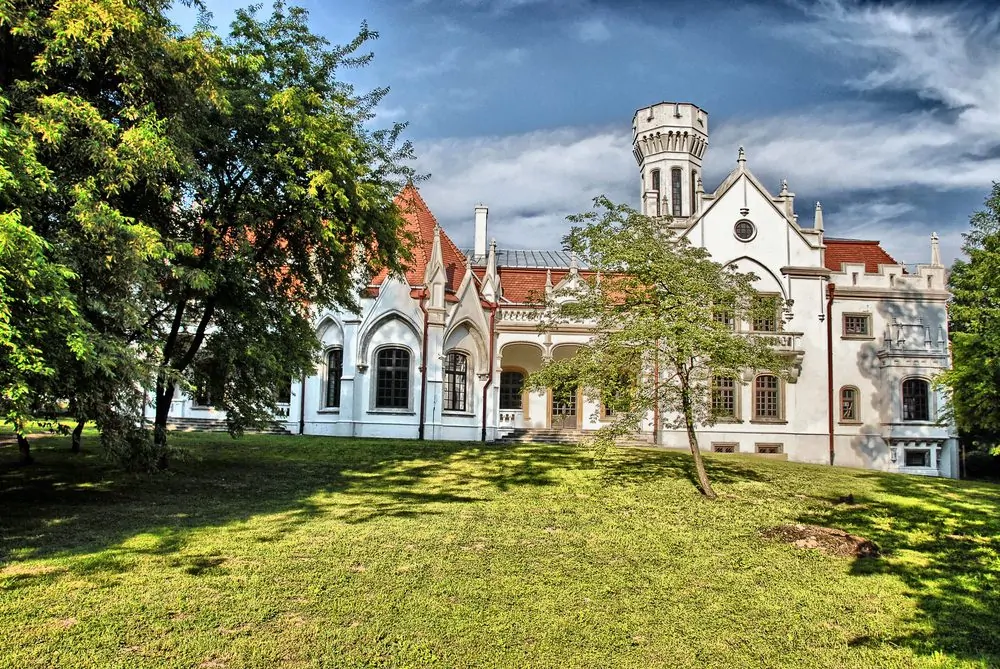
Constructed between 1846 and 1850 by Franciszek Trzecieski and designed by Franciszek Maria Lanci, Jasło Manor House replaced an older estate dating back to the early 17th century. The original estate was a fortified brick manor surrounded by a moat and rampart, which was later transformed into a Classicist manor house.
During World War I, the palace was looted and its beautiful interiors were destroyed. In the interwar period, the interiors were partially rebuilt and furnished. In 1944, the property was nationalized, with the manor farm taken over by the State Agricultural Holding and the palace utilized by the Security Office and Poviat Office.
Fascinating Facts About Jasło Manor House
Location: Jasło, Poland
Years Built: 1846-1850
Architect: Franciszek Trzecieski
Architectural Style: Gothic Revival
Current Function: Post-Secondary Medical School
Current Owner: State Agricultural Holding
23. Karolin Palace
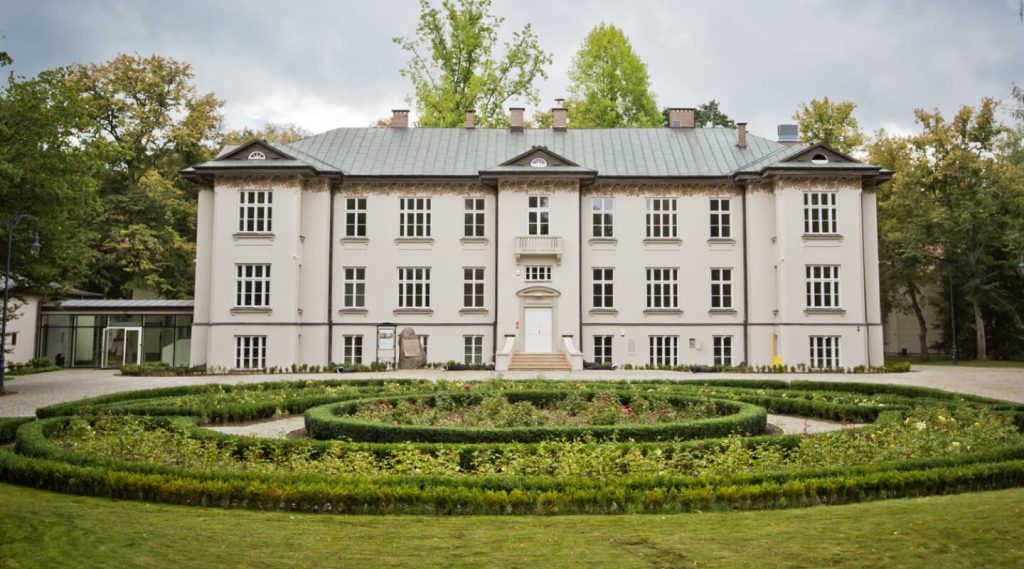
Karolin Palace has a history dating back to the early 20th century. The Association for Medical Assistance and Care of the Mentally and Nervously Sick decided to construct a sanatorium on land granted by local landowner Feliks Bobrowski. Construction began in 1909 and was supported by his widow, Karolina Bobrowska, after whom the palace was named. Architect Czesław Domaniewski designed the palace, which was completed in 1911.
Due to financial constraints following World War I, the sanatorium ceased operations. In 1923, the Russian Red Cross leased the mansion to the Benevolent Society. In 1932, after extensive renovations, Karolin once again welcomed visitors. In addition to providing patient treatment, the center began renting rooms to vacationers and operated commercially.
Fascinating Facts About Karolin Palace
Location: Karolin, Otrębusy, Poland
Years Built: 1909-1911
Architect: Czesław Domaniewski
Architectural Style: Neo-Renaissance
Current Function: Center for Polish Folklore
Current Owner: The Mazowsze National Folk Song and Dance Ensemble
24. Karpniki Castle

Karpniki Castle passed through the hands of several prominent Silesian families before being acquired by the royal Hohenzollern family in the 19th century. In 2014, it underwent renovations and was transformed into a luxury hotel and restaurant.
You may also like: Castles in Switzerland
Fascinating Facts About Karpniki Castle
Location: Karpniki, Poland
Year Built: Unknown
Architect: Unknown
Architectural Style: Neo-Gothic
Current Function: Luxury hotel
Current Owner: Private owner
25. Kliczków Castle

Built by Duke Bolko I of Jawor in 1297, Kliczków Castle has changed hands multiple times throughout history. It was rebuilt in the Renaissance style in 1585 and expanded by architects Heinrich Joseph Kayser and Karl von Großheim in the early 19th century, incorporating English Gothic, Italian Renaissance, and French mannerism elements.
Fascinating Facts About Kliczków Castle
Location: Kliczków, Poland
Year Built: 1297
Architect: Duke Bolko I of Jawor (Original); Heinrich Joseph Kayser and Karl von Großheim (Expansion)
Architectural Style: Renaissance/Neo-Gothic/Italian Renaissance/French Mannerism
Current Function: Hotel, Conference Center
Current Owner: Private owner
These are just a few examples of the stunning castles, palaces, and manor houses that can be found in Poland. Each of these architectural wonders showcases unique styles and historical significance, offering visitors a glimpse into Poland’s rich cultural heritage.
26. Krasiczyn Castle
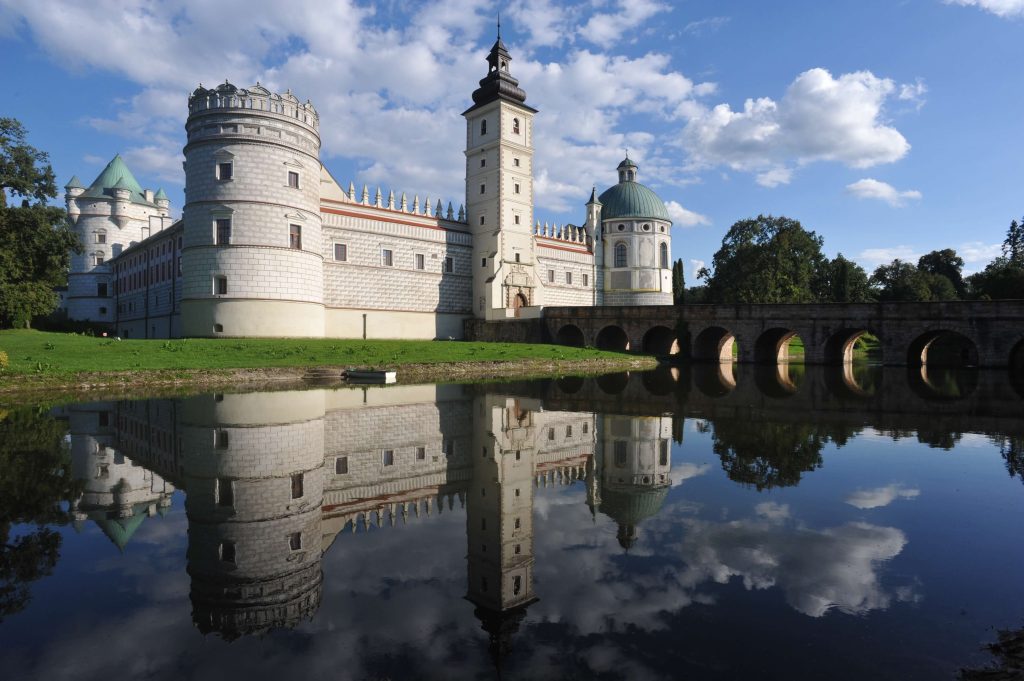
Krasiczyn Castle, located in Krasiczyn, Poland, was built in the 16th century as a fortified residence for the noble family of Pilecki. It displays a magnificent Renaissance architectural style with elements of Mannerism. The castle went through various transformations and renovations over the years, including the addition of Baroque and Neoclassical elements. Today, it serves as a hotel and a popular venue for weddings and events.
Fascinating Facts About Krasiczyn Castle
Location: Krasiczyn, Poland
Year Built: 16th century
Architect: Unknown
Architectural Style: Renaissance with Baroque and Neoclassical elements
Current Function: Hotel, event venue
Current Owner: Private owner
27. Malbork Castle

Malbork Castle, situated in Malbork, Poland, is one of the largest brick castles in the world and a UNESCO World Heritage site. It was built by the Teutonic Knights in the 13th century and served as their headquarters. The castle boasts impressive Gothic architecture and a fascinating history. Today, it houses a museum that showcases the medieval heritage of the region.
Fascinating Facts About Malbork Castle
Location: Malbork, Poland
Year Built: 13th century
Architect: Teutonic Knights
Architectural Style: Gothic
Current Function: Museum
Current Owner: Polish state
28. Nieborów Palace
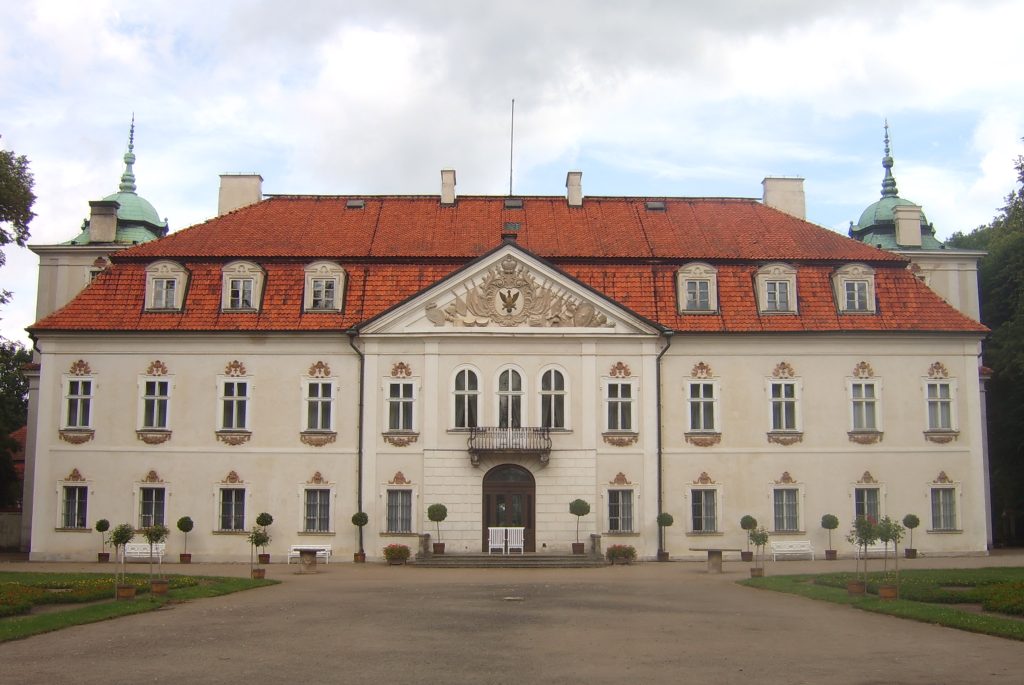
Nieborów Palace, located in Nieborów, Poland, is an exquisite Baroque residence surrounded by picturesque gardens. It was constructed in the 18th century for the Radziwiłł noble family. The palace features ornate interiors, a rich art collection, and beautifully manicured grounds. Today, it operates as a museum, providing visitors with a glimpse into the grandeur of Polish aristocratic life.
Fascinating Facts About Nieborów Palace
Location: Nieborów, Poland
Year Built: 18th century
Architect: Unknown
Architectural Style: Baroque
Current Function: Museum
Current Owner: Polish state
29. Oporów Castle

Oporów Castle, situated in Oporów, Poland, dates back to the 14th century and originally served as a defensive stronghold. Over the centuries, it underwent various architectural transformations, resulting in a unique blend of Gothic, Renaissance, and Baroque styles. Today, the castle is privately owned and serves as a venue for weddings, conferences, and cultural events.
Fascinating Facts About Oporów Castle
Location: Oporów, Poland
Year Built: 14th century
Architect: Unknown
Architectural Style: Gothic, Renaissance, Baroque
Current Function: Event venue
Current Owner: Private owner
30. Paczków Castle

Paczków Castle, located in Paczków, Poland, is a stunning example of Renaissance architecture. It was constructed in the 16th century and served as a defensive fortress. The castle features an impressive courtyard and a tower offering panoramic views of the surrounding area. Today, it operates as a museum, showcasing historical artifacts and providing insights into the castle’s rich history.
Fascinating Facts About Paczków Castle
Location: Paczków, Poland
Year Built: 16th century
Architect: Unknown
Architectural Style: Renaissance
Current Function: Museum
Current Owner: Polish state
31. Potocki Palace

Potocki Palace, situated in Radzyń Podlaski, Poland, is an opulent Neoclassical mansion constructed in the 18th century. It was commissioned by the influential Potocki family and designed by renowned architects. The palace features grand halls, elegant interiors, and a vast parkland. Currently, it serves as a cultural center, hosting exhibitions, concerts, and other artistic events.
Fascinating Facts About Potocki Palace
Location: Radzyń Podlaski, Poland
Year Built: 18th century
Architect: Unknown
Architectural Style: Neoclassical
Current Function: Cultural center
Current Owner: Local municipality
32. Pszczółki Palace
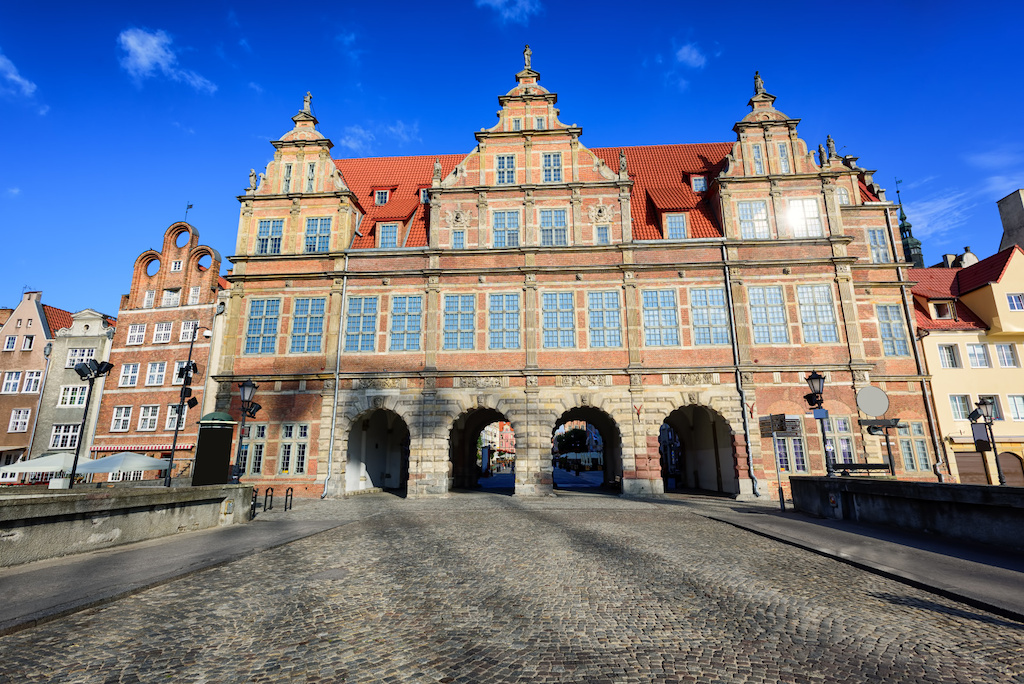
Pszczółki Palace, located in Pszczółki, Poland, is an enchanting example of a Romantic-style mansion. It was built in the 19th century for the von Reinhold family. The palace boasts beautiful interiors adorned with stucco decorations, as well as a picturesque park with a lake. Today, it operates as a hotel and event venue, providing guests with a luxurious and historic experience.
Fascinating Facts About Pszczółki Palace
Location: Pszczółki, Poland
Year Built: 19th century
Architect: Unknown
Architectural Style: Romantic
Current Function: Hotel, event venue
Current Owner: Private owner
33. Radziwiłł Palace
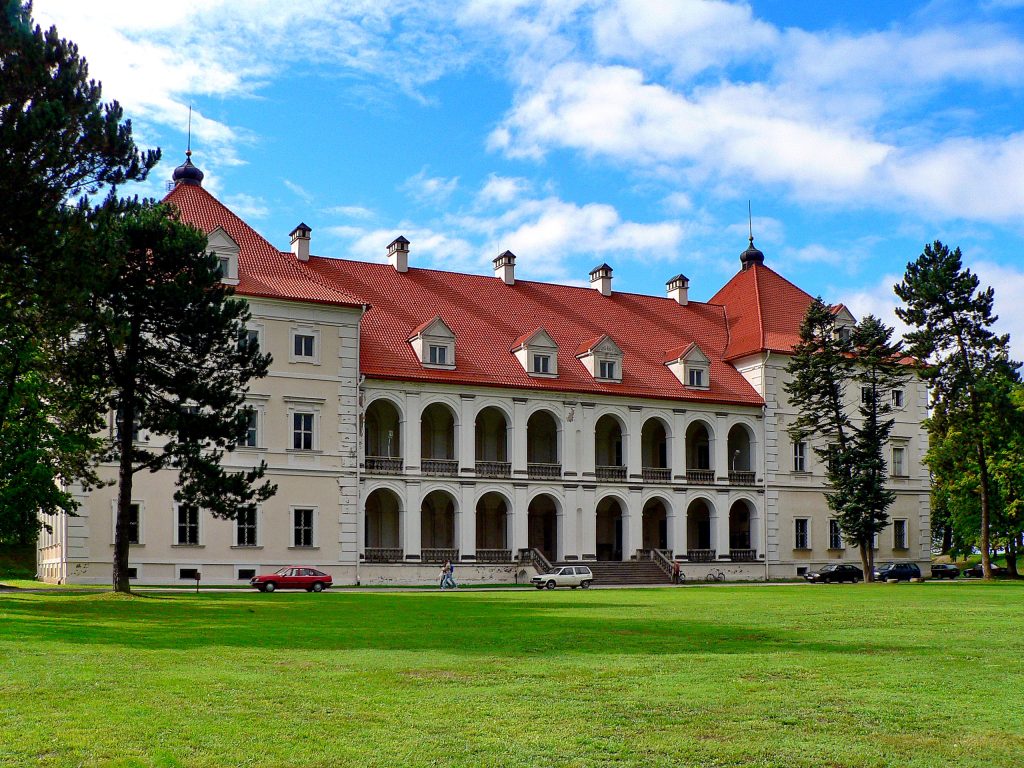
Radziwiłł Palace, situated in Nieborów, Poland, is a magnificent Baroque residence that belonged to the influential Radziwiłł family. It was constructed in the 18th century and features exquisite architecture, lavish interiors, and extensive gardens. The palace houses a museum displaying historical artifacts and art collections. It is considered one of the most important cultural heritage sites in Poland.
Fascinating Facts About Radziwiłł Palace
Location: Nieborów, Poland
Year Built: 18th century
Architect: Unknown
Architectural Style: Baroque
Current Function: Museum
Current Owner: Polish state
34. Rzeszów Castle
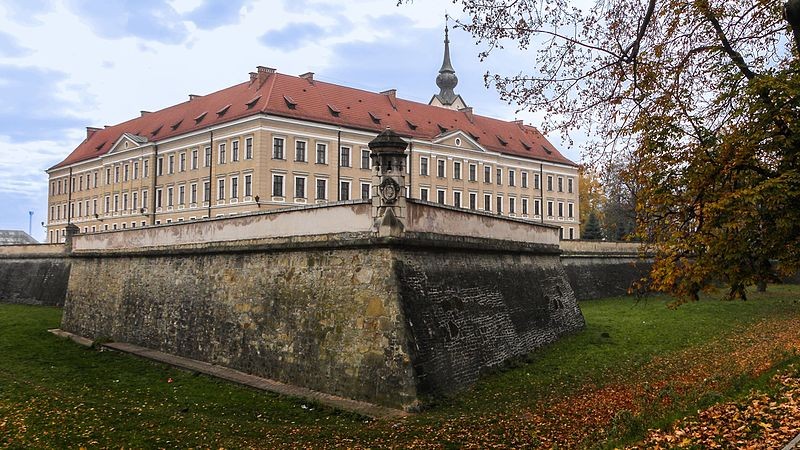
Rzeszów Castle, located in Rzeszów, Poland, dates back to the 14th century. Initially constructed as a defensive stronghold, it underwent numerous transformations throughout history. The castle features a mix of architectural styles, including Gothic, Renaissance, and Baroque elements. It currently houses the Regional Museum, which presents exhibitions on the history and culture of the region.
Fascinating Facts About Rzeszów Castle
Location: Rzeszów, Poland
Year Built: 14th century
Architect: Unknown
Architectural Style: Gothic, Renaissance, Baroque
Current Function: Regional Museum
Current Owner: Local municipality
35. Siewierz Castle

Siewierz Castle, situated in Siewierz, Poland, is a medieval fortress with a rich history. Built in the 14th century, it served as the residence of Polish kings and bishops. The castle underwent renovations in the Renaissance and Baroque periods, resulting in a unique blend of architectural styles. Today, it operates as a museum, providing visitors with insights into the castle’s past.
Fascinating Facts About Siewierz Castle
Location: Siewierz, Poland
Year Built: 14th century
Architect: Unknown
Architectural Style: Medieval with Renaissance and Baroque elements
Current Function: Museum
Current Owner: Polish state
36. Skórzec Manor
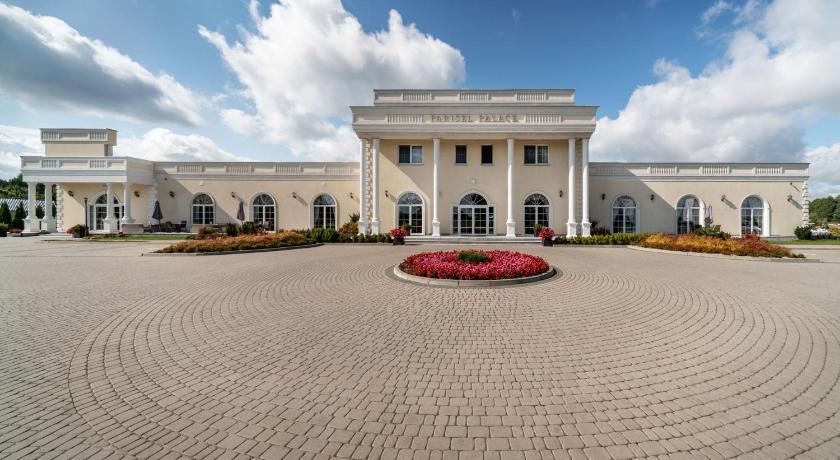
Skórzec Manor, located in Skórzec, Poland, is a charming manor house with a rich history. Built in the 18th century, it showcases a combination of Baroque and Neoclassical styles. The manor features beautiful interiors, including a grand ballroom and a library. Currently, it serves as a cultural center, hosting concerts, exhibitions, and other artistic events.
Fascinating Facts About Skórzec Manor
Location:
Skórzec, Poland
Year Built: 18th century
Architect: Unknown
Architectural Style: Baroque, Neoclassical
Current Function: Cultural center
Current Owner: Local municipality
37. Stężyca Palace
Stężyca Palace, situated in Stężyca, Poland, is an elegant Neoclassical mansion built in the 19th century. It was originally constructed as a hunting lodge and later expanded into a grand residence. The palace features stunning architecture, including a central rotunda and intricate interior decorations. Today, it serves as a hotel and event venue, offering guests a luxurious and historic experience.
Fascinating Facts About Stężyca Palace
Location: Stężyca, Poland
Year Built: 19th century
Architect: Unknown
Architectural Style: Neoclassical
Current Function: Hotel, event venue
Current Owner: Private owner
38. Śmiełów Palace
Śmiełów Palace, located in Śmiełów, Poland, is a splendid example of Renaissance Revival architecture. It was constructed in the 19th century and showcases intricate details and decorative elements. The palace is surrounded by a beautiful park and offers breathtaking views of the surrounding countryside. Currently, it is privately owned and occasionally opens its doors to the public for special events.
Fascinating Facts About Śmiełów Palace
Location: Śmiełów, Poland
Year Built: 19th century
Architect: Unknown
Architectural Style: Renaissance Revival
Current Function: Private events
Current Owner: Private owner
39. Świdnica Castle
Świdnica Castle, situated in Świdnica, Poland, dates back to the 13th century. It was initially constructed as a defensive fortress and later transformed into a Renaissance-style residence. The castle suffered damage during various wars and underwent extensive reconstruction in the 20th century. Today, it serves as a cultural center, hosting concerts, exhibitions, and other events.
Fascinating Facts About Świdnica Castle
Location: Świdnica, Poland
Year Built: 13th century
Architect: Unknown
Architectural Style: Renaissance
Current Function: Cultural center
Current Owner: Local municipality
40. Szczytno Royal Castle
Szczytno Royal Castle, located in Szczytno, Poland, is a historic fortress built in the 14th century. It served as a residence for Polish kings and nobility. The castle underwent numerous reconstructions, resulting in a blend of architectural styles, including Gothic, Renaissance, and Baroque. Today, it houses a museum showcasing the history and culture of the region.
Fascinating Facts About Szczytno Royal Castle
Location: Szczytno, Poland
Year Built: 14th century
Architect: Unknown
Architectural Style: Gothic, Renaissance, Baroque
Current Function: Museum
Current Owner: Polish state
41. Ujazdów Castle
Ujazdów Castle, situated in Warsaw, Poland, is a historic fortress with a rich and varied history. Initially built in the 13th century, it served as a residence for Polish kings. Over the centuries, the castle underwent numerous reconstructions and expansions, resulting in a mix of architectural styles, including Gothic, Renaissance, and Baroque. Today, it houses the Center for Contemporary Art and hosts exhibitions, performances, and cultural events.
Fascinating Facts About Ujazdów Castle
Location: Warsaw, Poland
Year Built: 13th century
Architect: Unknown
Architectural Style: Gothic, Renaissance, Baroque
Current Function: Center for Contemporary Art
Current Owner: Polish state
42. Wawel Castle
Wawel Castle, located in Kraków, Poland, is one of the country’s most iconic landmarks. It was built in the 14th century and served as the residence of Polish kings and queens. The castle exhibits a blend of architectural styles, including Gothic, Renaissance, and Baroque. Today, it houses a museum and is a symbol of Poland’s rich cultural heritage.
Fascinating Facts About Wawel Castle
Location: Kraków, Poland
Year Built: 14th century
Architect: Unknown
Architectural Style: Gothic, Renaissance, Baroque
Current Function: Museum
Current Owner: Polish state
43. Wiśnicz Castle
Wiśnicz Castle, situated in Wiśnicz, Poland, is a medieval fortress dating back to the 14th century. It served as a defensive stronghold and underwent various architectural transformations over the centuries. The castle features a unique blend of Gothic and Renaissance styles. Today, it operates as a museum and a venue for cultural events.
Fascinating Facts About Wiśnicz Castle
Location: Wiśnicz, Poland
Year Built: 14th century
Architect: Unknown
Architectural Style: Gothic, Renaissance
Current Function: Museum
Current Owner: Polish state
44. Wodzisław Castle
Wodzisław Castle, located in Wodzisław Śląski, Poland, is a medieval fortress constructed in the 13th century. It served as a residence for the noble families of Silesia. The castle exhibits elements of Gothic and Renaissance architecture. Although it fell into ruin in the past, ongoing restoration efforts have revived its former glory, and it is now open to the public.
Fascinating Facts About Wodzisław Castle
Location: Wodzisław Śląski, Poland
Year Built: 13th century
Architect: Unknown
Architectural Style: Gothic, Renaissance
Current Function: Tourist attraction
Current Owner: Polish state
45. Zamek Museum
Zamek Museum, situated in Lublin, Poland, is housed within the historic Lublin Castle complex. The castle dates back to the 13th century and displays a mix of architectural styles, including Gothic and Renaissance. The museum showcases exhibitions on the history and culture of the Lublin region. It is a significant cultural institution preserving the heritage of the area.
Fascinating Facts About Zamek Museum
Location: Lublin, Poland
Year Built: 13th century
Architect: Unknown
Architectural Style: Gothic, Renaissance
Current Function: Museum
Current Owner: Polish state
46. Żagań Castle
Żagań Castle, located in Żagań, Poland, is a medieval fortress with a rich history. Built in the 13th century, it served as a residence for Polish princes and later for noble families. The castle underwent various reconstructions and expansions, resulting in a unique architectural blend of Gothic, Renaissance, and Baroque styles. Today, it operates as a museum and cultural center.
Fascinating Facts About Żagań Castle
Location: Żagań, Poland
Year Built: 13th century
Architect: Unknown
Architectural Style: Gothic, Renaissance, Baroque
Current Function: Museum, cultural center
Current Owner: Polish state
47. Żary Castle
Żary Castle, situated in Żary, Poland, is a magnificent Renaissance-style fortress. It was constructed in the 16th century and served as a residence for noble families. The castle features a stunning facade adorned with intricate details and sculptures. Today, it operates as a museum, showcasing historical artifacts and providing insights into the castle’s rich history.
Fascinating Facts About Żary Castle
Location: Żary, Poland
Year Built: 16th century
Architect: Unknown
Architectural Style: Renaissance
Current Function: Museum
Current Owner: Polish state
48. Żywiec Castle
Żywiec Castle, located in Żywiec, Poland, is an impressive fortress built in the 18th century. It was commissioned by the Habsburg dynasty and designed in a Neoclassical architectural style. The castle features elegant interiors, including a grand ballroom and a richly decorated chapel. Today, it operates as a museum, offering visitors a glimpse into the history and culture of the region.
Fascinating Facts About Żywiec Castle
Location: Żywiec, Poland
Year Built: 18th century
Architect: Unknown
Architectural Style: Neoclassical
Current Function: Museum
Current Owner: Polish state
49. Krzyżtopór Castle
Krzyżtopór Castle, situated in Ujazd, Poland, is a remarkable fortress with a unique architectural design. Built in the 17th century, it was intended to be a symbol of the power and wealth of its owner, the magnate Krzysztof Ossoliński. The castle features a complex layout, including a pentagonal shape with four bastions. Despite being partially ruined, it remains an intriguing attraction for visitors.
Fascinating Facts About Krzyżtopór Castle
Location: Ujazd, Poland
Year Built: 17th century
Architect: Unknown
Architectural Style: Unique design
Current Function: Tourist attraction
Current Owner: Polish state
50. Rogalin Palace
Rogalin Palace, located in Rogalin, Poland, is an elegant Neoclassical mansion surrounded by a picturesque park. It was constructed in the 18th century for the Raczyński family. The palace houses a remarkable art collection, including works by renowned painters, and the surrounding park is home to ancient oak trees. Today, it operates as a museum and cultural center.
Fascinating Facts About Rogalin Palace
Location: Rogalin, Poland
Year Built: 18th century
Architect: Unknown
Architectural Style: Neoclassical
Current Function: Museum, cultural center
Current Owner: Polish state
51. Golub-Dobrzyń Castle
Golub-Dobrzyń Castle, situated in Golub-Dobrzyń, Poland, is a medieval fortress dating back to the 13th century. It served as a residence for Polish kings and bishops. The castle displays a mix of architectural styles, including Gothic and Renaissance elements. Today, it houses a museum that presents exhibitions on the history of the castle and the region.
Fascinating Facts About Golub-Dobrzyń Castle
Location: Golub-Dobrzyń, Poland
Year Built: 13th century
Architect: Unknown
Architectural Style: Gothic, Renaissance
Current Function: Museum
Current Owner: Polish state
52. Będzin Castle
Będzin Castle, located in Będzin, Poland, is a medieval fortress perched on a hilltop. It was built in the 14th century as a defensive stronghold and later transformed into a royal residence. The castle showcases a mix of architectural styles, including Gothic and Renaissance elements. Today, it operates as a museum, offering visitors a glimpse into the castle’s history and the surrounding region.
Fascinating Facts About Będzin Castle
Location: Będzin, Poland
Year Built: 14th century
Architect: Unknown
Architectural Style: Gothic, Renaissance
Current Function: Museum
Current Owner: Polish state
53. Bytów Castle
Bytów Castle, situated in Bytów, Poland, is a medieval fortress built in the 14th century. It served as a residence for the Teutonic Knights and later for noble families. The castle features Gothic architecture with defensive walls, towers, and a courtyard. Today, it operates as a museum, providing insights into the castle’s history and the medieval period in the region.
Fascinating Facts About Bytów Castle
Location: Bytów, Poland
Year Built: 14th century
Architect: Unknown
Architectural Style: Gothic
Current Function: Museum
Current Owner: Polish state
54. Czersk Castle
Czersk Castle, located in Czersk, Poland, is a medieval fortress with a rich history. Built in the 14th century, it served as a residence for Polish kings and queens. The castle exhibits a mix of architectural styles, including Gothic and Renaissance elements. Today, it operates as a museum and cultural center, hosting exhibitions, concerts, and events.
Fascinating Facts About Czersk Castle
Location: Czersk, Poland
Year Built: 14th century
Architect: Unknown
Architectural Style: Gothic, Renaissance
Current Function: Museum, cultural center
Current Owner: Polish state
55. Dobrzyca Castle
Dobrzyca Castle, situated in Dobrzyca, Poland, is a historic fortress built in the 16th century. It served as a residence for noble families and witnessed various architectural modifications over the centuries. The castle features a Renaissance architectural style with a defensive tower and elegant interiors. Today, it operates as a hotel and event venue, offering guests a unique historical experience.
Fascinating Facts About Dobrzyca Castle
Location: Dobrzyca, Poland
Year Built: 16th century
Architect: Unknown
Architectural Style: Renaissance
Current Function: Hotel, event venue
Current Owner: Private owner
56. Grodziec Castle
Grodziec Castle, located in Zagrodno, Poland, is a medieval fortress perched on a limestone hilltop. It was built in the 14th century and served as a defensive stronghold. The castle features a combination of architectural styles, including Gothic and Renaissance elements. Today, it operates as a museum and offers guided tours, medieval reenactments, and cultural events.
Fascinating Facts About Grodziec Castle
Location: Zagrodno, Poland
Year Built: 14th century
Architect: Unknown
Architectural Style: Gothic, Renaissance
Current Function: Museum
Current Owner: Polish state
57. Kamieniec Ząbkowicki Castle
Kamieniec Ząbkowicki Castle, situated in Kamieniec Ząbkowicki, Poland, is an impressive fortress dating back to the 13th century. It served as a residence for noble families and underwent various architectural transformations over the years. The castle showcases a mix of architectural styles, including Gothic, Renaissance, and Baroque. Today, it operates as a museum, providing visitors with insights into its history.
Fascinating Facts About Kamieniec Ząbkowicki Castle
Location: Kamieniec Ząbkowicki, Poland
Year Built: 13th century
Architect: Unknown
Architectural Style: Gothic, Renaissance, Baroque
Current Function: Museum
Current Owner: Polish state
58. Krasiczyn Castle
Krasiczyn Castle, located in Krasiczyn, Poland, is a magnificent Renaissance fortress with a rich history. It was constructed in the 16th century as a fortified residence for the noble family of Pilecki. The castle displays a blend of Renaissance, Mannerist, and Baroque architectural styles. It features impressive towers, a beautiful courtyard, and lavishly decorated interiors. Today, Krasiczyn Castle serves as a hotel and a popular venue for weddings, conferences, and cultural events.
Fascinating Facts About Krasiczyn Castle
Location: Krasiczyn, Poland
Year Built: 16th century
Architect: Unknown
Architectural Style: Renaissance, Mannerism, Baroque
Current Function: Hotel, event venue
Current Owner: Private owner
